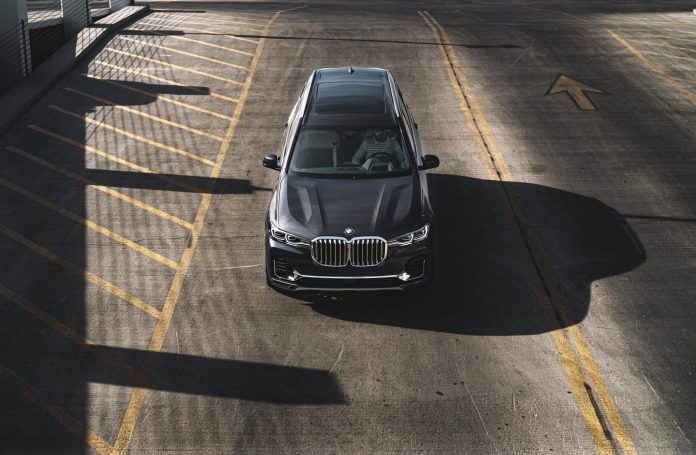BMW is pushing in-car 5G connectivity at the Consumer Electronics Show (CES) 2020 in Las Vegas. The German car marque reckons its forthcoming iNEXT electric crossover, scheduled for launch in 2021, equipped with a built-in SIM, will be the first high-end consumer vehicle to come with 5G.
Subsequent models will also feature 5G. BMW said 5G will be a “prerequisite” for autonomous driving, from Level 3 upwards. New 5G telematics componentry is under development as part of its collaboration with Samsung’s HARMAN division.
BMW said the increasing digital complexity of vehicles, including with driving assistance and semi-automated driving functions, is driving the need for lower-latency and higher-bandwidth conectivity, which 5G serves.
“To make safety-related vehicle functions work in a model like the BMW iNEXT, the following three boxes at least must be ticked: low latency, guaranteed network coverage and an allotted minimum data rate for specific applications. This is possible with 5G,” it said in a statement.
BMW also claims to be the first automotive maker to support the Global Navigation Satellite System (GNSS), for high precision positioning. “GNSS is also essential when it comes to incorporating semi-automated driving functions, such as those set to be offered in the BMW iNEXT,” it said.
Since the middle of 2019, BMW has made anonymised safety-related traffic data available for non-commercial use.
“When it comes to road safety, there are no competitors, only partners,” said Christoph Grote, the company’s senior vice president for electronics. “By sharing traffic data and implementing C-V2X vehicle connectivity, we can directly improve safety for road users everywhere.”
A cooperative intelligent transport systems (C-ITS) requires data has to be made available to all parties in the system via a neutral server platform, said BMW. This includes car makers, and other elements in the industry, as well as traffic associations and relevant authorities.
A C-ITS system also requires all road users need to be interconnected. This is the only way to ensure they can communicate with one another directly, peer-to-peer, and in ‘real time’ without having to rely on a mobile network connection.
BMW has teamed up with Qualcomm at the CES to stage a live 5G-based demo of C-V2X for these ends.
For consumers, BMW noted the new streaming capabilities 5G affords for vehicles in transit, notably for 4K video for entertainment and conferencing. Much of the CES showcase has been geared to consumers, as per the show’s stated remit.
At its stand at CES, the company has been showing a concept car, the BMW i Interaction EASE, which proposes “almost human-like interaction between passenger and vehicle”. Its headline feature is a so-called ‘gaze detection system’, which uses artificial intelligence (AI) to detect when a passenger fixes their gaze on an object, and offers information and ways to interact with it.
5G connectivity pinpoints the vehicle’s position, and feeds into the algorithm. A heads-up display (HUD) spans the front windscreen to impose a ‘digital layer’ over the real-world view, and show the additional information.
The concept car also features touch, gesture, and natural speech controls for interacting with a digital assistant.
Meanwhile, BMW is showing three X7 models fitted with a so-called ZeroG Lounger seat, which tilts back 60 degrees, whilst retaining standard safety features. The seat also features as part of its concept-based i3 Urban Suite, brought to life in i3 cars at the show, with their interiors ripped out and redesigned.
These new interiors, to give a sense of how passengers will spend their time in vehicles when they are not required to drive them, do-away with the front passenger seat, and attempt to “recreate the ambience of a boutique hotel” – which means wood and lonuge chairs, alongside a zero-emission powertrain.
“The result is an impressive demonstration of how such formats and content could be integrated in the future and the possibilities this offers, particularly once Level 4 and Level 5 autonomous driving become a reality.”

